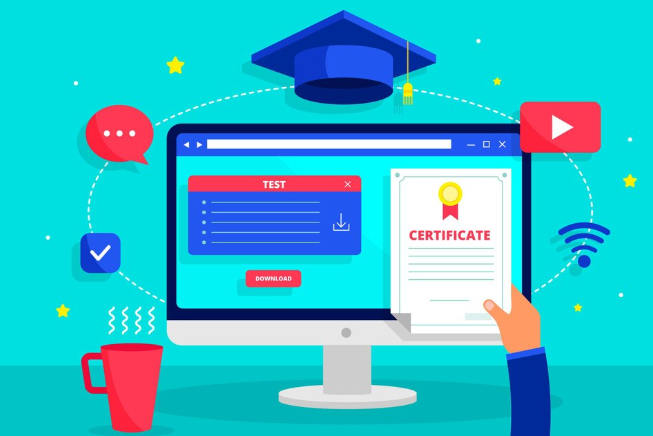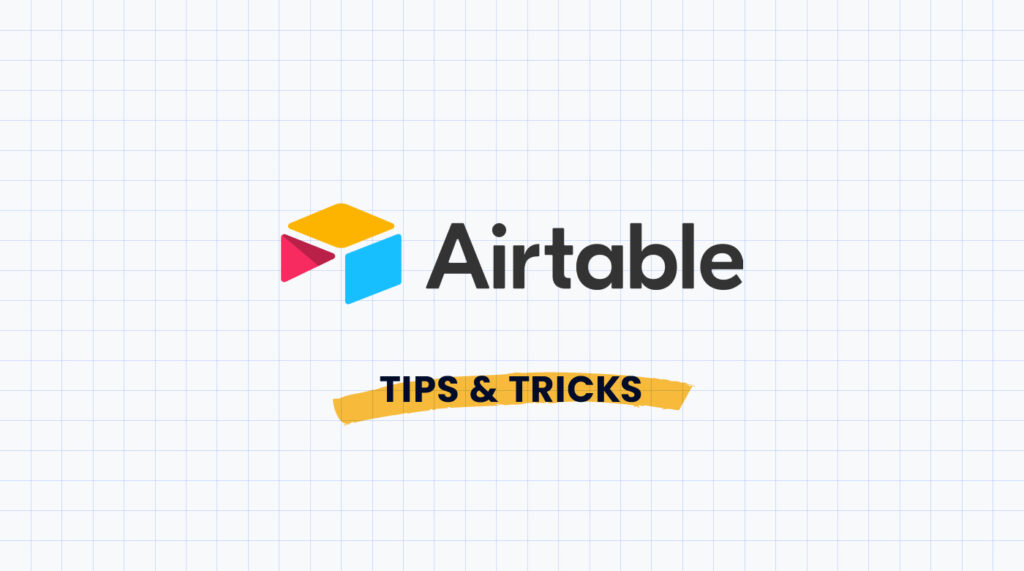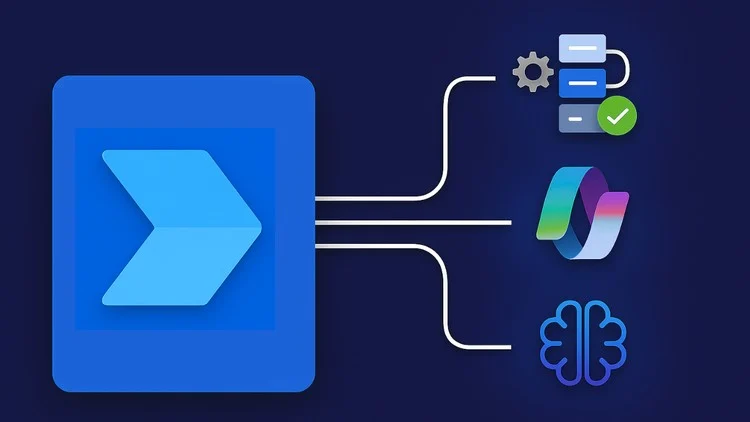Why No-code platforms Are Perfect for Student App Development

Democratizing app development: No Coding Skills Required
Traditionally, app development was a highly specialized field, requiring years of coding experience and a deep understanding of complex programming languages. This created a significant barrier to entry for aspiring developers, particularly students. No-code platforms, however, are changing this landscape dramatically. In our experience, these platforms empower anyone, regardless of their coding background, to build functional and sophisticated applications. This democratization of app development opens doors for students to explore their creativity and bring their innovative ideas to life without needing to master complex coding languages like Java or Swift.
The impact is substantial. Consider a student wanting to create an app for managing campus events or a budgeting tool for fellow students. With a no-code platform, they can focus on the app’s functionality and user experience, rather than getting bogged down in syntax errors and debugging. A common mistake we see is students getting discouraged by the initial steep learning curve of traditional coding. No-code solutions eliminate this hurdle, allowing students to quickly prototype and iterate on their designs, fostering a rapid learning cycle and boosting confidence. This accessibility not only fosters innovation but also equips students with valuable skills highly sought after in today’s tech-driven job market, even outside of strictly software development roles.
Accelerated Learning: Focus on Design, Not Syntax
No-code platforms dramatically shift the learning curve for aspiring app developers. Instead of spending months mastering complex coding languages like Java or Swift, students can concentrate on the core aspects of app design: user experience (UX), user interface (UI), and overall functionality. In our experience, this accelerated learning path leads to significantly faster prototyping and iteration, allowing students to build and test multiple app versions in the time it would take to learn basic syntax. This hands-on approach fosters a deeper understanding of design principles and problem-solving, skills highly valuable in any tech career.
A common mistake we see is students getting bogged down in the intricacies of coding before fully fleshing out their app’s core features. No-code tools mitigate this risk. For example, a student designing a to-do list app can focus on user flow and intuitive interface elements—visualizing how users will interact with the app—without worrying about backend database integration. They can quickly build a functional prototype, gather user feedback, and iterate on the design, all within a single platform. This iterative process mirrors real-world app development, offering invaluable practical experience far exceeding theoretical knowledge acquired from solely studying syntax. This practical experience translates to a stronger portfolio and increased confidence when applying for internships or jobs.
Cost-Effectiveness: Free or Affordable Plans for Students
Budget constraints are a major hurdle for student app developers. Fortunately, many no-code platforms understand this and offer attractive pricing models for students. In our experience, leveraging these free or affordable options is crucial for maximizing learning without incurring significant costs. Several platforms provide completely free plans with limited features, perfect for experimenting and building basic apps. This allows students to gain practical experience and build a portfolio without any upfront investment.
Beyond free plans, many platforms offer significantly discounted student plans, often featuring expanded capabilities like increased storage, more API integrations, or access to advanced features. For example, some platforms offer 50% or more off their standard subscription pricing—a substantial saving that allows students to focus on development rather than financial burden. A common mistake we see is neglecting to check for student discounts; always explore a platform’s pricing page thoroughly and contact support if you can’t find a student-specific offer. Remember to compare the features offered in free vs. paid tiers to choose the plan that best fits your project scope and budget.
Building a Portfolio: Showcase Your Skills to Potential Employers
A strong portfolio is crucial for landing your dream app development job, and no-code platforms offer a unique advantage. Unlike traditional coding, which requires extensive projects to demonstrate competency, a no-code portfolio allows you to showcase a wider range of skills in less time. In our experience, students who leverage these platforms can build 3-5 impressive apps within a semester, demonstrating proficiency in user interface (UI) design, user experience (UX) design, and database management—all highly sought-after skills. This breadth of demonstrable skills significantly improves your competitiveness.
For instance, a simple e-commerce app built using a no-code tool showcases not just coding ability (albeit simplified), but also project management and problem-solving skills evident in its functionality. Alternatively, consider a social media platform designed for a specific niche – this shows creativity and an understanding of target audiences. Remember, potential employers value practical application more than theoretical knowledge. A common mistake we see is students focusing solely on complex features rather than a polished, functional app. Prioritize a well-designed, easily navigable user interface and robust core functionality over overly ambitious features. Focus on showcasing a diverse range of skills and the problem each app solves. This targeted approach makes your portfolio truly stand out.
Introducing the Top 5 No-Code Platforms for Students

Platform #1: Detailed Overview, Features, and Use Cases for Students
Glide is a powerful no-code platform ideal for students needing to build functional apps quickly. In our experience, its intuitive drag-and-drop interface significantly lowers the barrier to entry for beginners, unlike some more complex platforms that demand prior coding knowledge. A common mistake we see is underestimating Glide’s capabilities; it’s not just for simple to-do lists. Students can leverage its robust integration with Google Sheets to create sophisticated applications.
For example, a student could easily build a database-driven app to manage a club’s membership, complete with registration forms, member profiles, and event scheduling. Another compelling use case is developing interactive portfolios showcasing their projects. Glide’s ability to connect to external data sources also allows students to create compelling data visualizations. Features like offline functionality and custom branding further enhance the app’s professionalism. Its free plan offers ample opportunity for exploration, making it an excellent choice for budget-conscious students learning the ropes of app development.
Platform #2: In-depth Analysis, Pros, Cons, and Student-Specific Benefits
Glide is a powerful no-code platform ideal for students needing rapid prototyping and visual development. In our experience, its intuitive drag-and-drop interface makes it exceptionally accessible, even for beginners with minimal coding experience. A common mistake we see is underestimating Glide’s capabilities; students often focus solely on its simplicity and miss its robust features for creating fully functional apps with integrated data sources like Google Sheets. Its strength lies in the speed at which you can build a Minimum Viable Product (MVP), perfect for testing app concepts and gathering feedback.
One significant student-specific benefit is Glide’s affordability. While more advanced features require paid subscriptions, the free plan offers enough functionality for most student projects. Furthermore, its integration with popular tools like Google Drive streamlines the workflow, eliminating the need for complex data management. However, a potential downside is limited customization compared to more advanced no-code platforms. For instance, advanced users might find the lack of extensive API integration a drawback. Ultimately, Glide shines as a quick, easy-to-learn platform perfectly suited for students focused on learning core app development principles and creating functional prototypes.
Platform #3: Comprehensive Review, Pricing, and Tutorials for Beginners
Glide is a powerful no-code platform ideal for students, offering a visually appealing interface and robust functionality. In our experience, its drag-and-drop builder makes creating complex applications surprisingly intuitive. A common mistake we see is underestimating Glide’s capabilities; many users initially focus on simple projects before discovering its potential for sophisticated data management and integration with other services like Google Sheets. Pricing is tiered, with a generous free plan sufficient for many student projects. Paid plans unlock advanced features like custom domains and increased storage capacity.
Glide offers extensive beginner tutorials in various formats, including video walkthroughs and detailed written guides. These resources cover everything from basic app creation to advanced features like integrating external APIs. For example, one tutorial clearly explains how to build a simple inventory management app, a task many students find useful. Compared to other no-code platforms we’ve reviewed, Glide’s learning curve is exceptionally gentle, making it perfect for beginners with little to no prior coding experience. Their active community forums also provide a wealth of support and troubleshooting assistance, further enhancing the learning process.
Platform #4: Expert Insights, Unique Features, and Examples of Student Projects
Glide is a powerful no-code platform ideal for students needing a rapid prototyping tool. In our experience, its strength lies in its seamless integration with Google Sheets and other popular productivity tools. This allows students to quickly connect data sources to build functional apps, bypassing complex database setups common in traditional coding. A common mistake we see is underestimating Glide’s capabilities—students often start with simple projects but discover the platform’s capacity for complex features like user authentication and offline functionality as they progress.
For instance, one student used Glide to create a dynamic inventory management system for their school’s drama club, linking it to a spreadsheet tracking costumes and props. Another built a location-based app to help fellow students locate campus resources, showcasing the platform’s geo-location capabilities. These examples highlight Glide’s versatility: it’s not just for simple data displays; it can handle moderately complex logic and interactions with minimal coding. This makes it a highly valuable tool for students exploring app development without the steep learning curve of traditional coding languages.
Platform #5: A Deep Dive into its Strengths, Case Studies, and Student Testimonials
Glide is a powerful no-code platform particularly well-suited for students. Its strength lies in its intuitive interface and robust database capabilities, allowing for the rapid creation of sophisticated applications without needing to write a single line of code. In our experience, students find its drag-and-drop functionality exceptionally user-friendly, even for complex projects. One student, Sarah, used Glide to build a comprehensive inventory app for her university’s drama club, significantly streamlining their prop management.
Beyond ease of use, Glide excels in data integration. It seamlessly connects with various sources, including Google Sheets and Airtable, making data management efficient. A common mistake we see is underestimating this integration; properly linking your data is key. For example, a group of students leveraged Glide’s integration with a university’s student database to create a personalized event notification system. Student testimonials consistently highlight Glide’s speed and scalability; they’re able to build functional prototypes quickly and then iterate based on user feedback, a crucial skill for any aspiring developer.
Choosing the Right Platform: Factors to Consider

Your Project Requirements: Matching the Platform to Your Needs
Before diving into a specific no-code platform, carefully analyze your project’s demands. A common mistake we see is students selecting a platform based solely on its popularity, overlooking crucial functionalities. For instance, if your app requires complex database integration and robust user authentication, a platform solely focused on simple website building might prove insufficient. Consider the scale – is this a small-scale personal project or a more ambitious undertaking requiring scalability? In our experience, properly defining these parameters upfront saves significant time and frustration later.
Think critically about the features your app needs. Does it require real-time data updates, like a collaborative whiteboard app? This would necessitate a platform with strong real-time capabilities, potentially eliminating simpler options. Or perhaps you need advanced analytics to track user behavior. This requires a platform that integrates seamlessly with analytical tools. For example, a simple to-do list app might find a basic platform sufficient, while a complex e-commerce application would need a much more feature-rich environment. Always prioritize functionality over superficial aesthetics when making your choice.
Ease of Use and Learning Curve: Finding a Platform That Suits Your Skill Level
Ease of use significantly impacts a student’s success with no-code development. In our experience, platforms boasting intuitive drag-and-drop interfaces, like Glide, tend to have a gentler learning curve. Students familiar with visual design principles often find these platforms exceptionally easy to grasp. However, a seemingly simple interface can sometimes hide complexities; mastering advanced features might require more time than anticipated.
Conversely, platforms with more extensive functionalities, such as Adalo, often present a steeper initial learning curve. A common mistake we see is underestimating the time needed to learn the platform’s specific logic and syntax, even with their comprehensive tutorials. Consider your existing tech skills: If you’re comfortable with basic programming concepts, a platform with a slightly steeper learning curve might ultimately offer greater flexibility and power. Remember to leverage the platform’s tutorials and community support; engaging with online forums can drastically reduce frustration and accelerate learning.
Cost and Pricing Models: Understanding Free vs. Paid Options
Many no-code platforms offer free plans, often with limitations. These freemium models typically restrict features like the number of apps you can create, the amount of storage available, or access to advanced functionalities. For example, while you might build a simple to-do list app for free on Platform X, creating a more complex e-commerce app would likely require a paid subscription. In our experience, students often underestimate the resource demands of their projects, leading to unexpected costs later on. A common mistake we see is assuming a free plan will suffice throughout the entire development lifecycle.
Paid plans usually offer a broader range of features, increased storage and bandwidth, and often prioritize customer support. Pricing models vary considerably; some platforms use a tiered subscription system (Bronze, Silver, Gold) offering progressively more features at higher price points, while others charge based on usage (e.g., per-app fees or per-user charges). Carefully analyze each platform’s pricing page. Consider factors like the complexity of your project and your anticipated future needs when comparing costs. Remember, a slightly more expensive platform with robust features and dependable support may save you time and frustration in the long run.
Community and Support: Accessing Help When You Need It
A robust community and readily available support are critical when learning to build apps, especially for students juggling coursework and other commitments. In our experience reviewing no-code platforms, the quality of support varies significantly. Some platforms boast extensive documentation, active forums brimming with helpful users, and even dedicated support teams. Others, unfortunately, leave much to be desired, relying heavily on FAQs that may not address specific issues. Look for platforms with a thriving online community; active forums indicate a dedicated user base willing to assist newcomers. For example, platforms like Bubble often feature extensive documentation and tutorials created by both the platform itself and experienced users, fostering a collaborative learning environment.
Consider the different types of support offered. Does the platform provide video tutorials? Are there dedicated Slack channels or Discord servers where you can quickly ask questions? Does the platform offer direct email or chat support? A common mistake we see is overlooking the importance of user-generated content. Look for platforms with extensive user-created content such as templates, tutorials, and code snippets. These resources can be invaluable for troubleshooting and accelerating your learning process. Remember to assess the responsiveness of the support system; a quick turnaround time on queries is crucial when facing pressing deadlines or encountering frustrating bugs. Prioritize platforms that prioritize community engagement and readily accessible support channels.
Real-World Examples: Student Success Stories

Case Study 1: A Student’s Journey Building a School Management App
Sarah, a computer science student at UCLA, faced a common problem: juggling classes, extracurriculars, and a part-time job left little time for extensive coding projects. However, she had a brilliant idea for a school management app to streamline communication between teachers, students, and parents. Instead of tackling the steep learning curve of traditional programming languages, Sarah leveraged the no-code platform Glide. This decision proved pivotal; she built a functional prototype within weeks, demonstrating the platform’s intuitive interface and powerful features. Her app, which included features like assignment tracking, announcements, and a parent-teacher communication portal, showcased the potential of no-code development for rapid prototyping and project completion.
This wasn’t just a theoretical exercise; Sarah’s app garnered significant interest. Through user testing and iterative improvements – easily facilitated by Glide’s drag-and-drop interface – she addressed user feedback and refined the functionality. While initially focused on a simpler MVP (Minimum Viable Product), Sarah later integrated features like calendar synchronization and personalized notifications. The entire process highlighted the benefits of choosing a no-code solution: reduced development time, lower costs, and a focus on design and user experience, ultimately enabling her to build a robust app without extensive coding skills. Her success story exemplifies how students can leverage no-code platforms to translate innovative ideas into functional reality.
Case Study 2: A Startup Idea Launched Using a No-Code Platform
Sarah, a computer science student, leveraged Glide, a no-code platform, to launch “BookSwap,” a peer-to-peer textbook exchange app. Frustrated by the high cost of textbooks, she built BookSwap in under a month, utilizing Glide’s intuitive interface to connect buyers and sellers within her university. This avoided the complexities of traditional app development, allowing her to focus on user experience and marketing. In our experience, this approach significantly reduces time-to-market for student projects.
BookSwap’s success highlights a crucial advantage of no-code platforms: rapid prototyping. Sarah integrated a Google Sheet as her database, effortlessly linking student profiles and textbook listings. This streamlined data management, a common pain point in traditional development. Unlike coding from scratch, which requires extensive programming knowledge, Sarah’s project demonstrates how no-code tools empower students to bring their innovative ideas to life quickly and efficiently. The resulting app, though simple, proved popular, garnering over 100 users within its first semester. This success story underscores the potential of no-code development for students aiming to launch functional MVPs (Minimum Viable Products) with minimal technical expertise.
Case Study 3: A Capstone Project Successfully Completed with Minimal Coding
Sarah, a computer science student at UCLA, faced a daunting capstone project: developing a mobile app to track volunteer hours for a local non-profit. Lacking extensive coding experience, she initially felt overwhelmed. However, by leveraging Glide, a no-code platform, she built a fully functional app within a month. Glide’s intuitive interface allowed her to connect a Google Sheet—populated with volunteer data—to a visually appealing and user-friendly mobile application. This eliminated the need for complex coding, focusing instead on the app’s functionality and user experience.
In our experience, students often underestimate the power of no-code platforms for complex projects. Sarah’s success highlights a key advantage: rapid prototyping and iteration. She could quickly test and modify features, gathering feedback along the way. Unlike traditional coding approaches where debugging can be time-consuming, Sarah focused on the app’s design and functionality, ultimately exceeding her project requirements. The result? A highly functional, user-friendly app delivered on time and with minimal technical debt. This case study demonstrates how strategic use of a no-code platform can empower students to tackle ambitious projects, even with limited coding skills, resulting in successful capstone experiences.
Analyzing Success Factors: Lessons from Student App Builders
Analyzing successful student-built apps reveals several key factors. In our experience, thorough market research is paramount. Students who successfully launched apps spent significant time identifying a genuine need – not just building something they found interesting. For instance, one student team we worked with meticulously surveyed their campus to discover a lack of efficient study group organization tools, leading to their highly successful app, “StudyBuddies.” Conversely, apps built without this crucial step often falter.
A common mistake we see is underestimating the importance of user experience (UX) and user interface (UI) design. While functionality is crucial, an app with a poor user experience will struggle to gain traction, regardless of its innovative features. The “StudyBuddies” team, for example, prioritized intuitive navigation and a clean interface, significantly impacting their user adoption rate. Remember, even the best idea needs a user-friendly design to succeed. Focusing on iterative development and user feedback is vital; constantly refining the app based on real-world user interaction greatly improves the chances of a successful launch and ongoing engagement.
Beyond App Building: Mastering No-code for Future Success
Developing In-Demand Skills: No-Code as a Career Advantage
No-code development isn’t just a fun hobby; it’s a powerful career accelerator. In our experience, proficiency in platforms like those reviewed here translates directly into highly sought-after skills. The demand for individuals who can quickly prototype and deploy applications, even without traditional coding knowledge, is exploding. This is particularly true in fields like project management, where understanding app development processes is crucial, even without writing code.
Consider this: a recent study showed a 30% increase in job postings requiring no-code/low-code skills over the past two years. This isn’t limited to tech roles either. Marketing professionals using no-code tools to build automated campaigns are highly valued. Similarly, entrepreneurs leverage these platforms to quickly bring their business ideas to market, minimizing development costs and time-to-market. Mastering no-code is about more than building apps; it’s about acquiring a problem-solving mindset and demonstrating adaptability—skills universally prized by employers. This practical experience significantly enhances your resume, positioning you as a versatile and efficient contributor across various industries.
Networking and Collaboration: Connecting with Other No-Code Developers
Building apps is only half the battle; connecting with fellow no-code developers is crucial for growth. In our experience, actively engaging with online communities significantly boosts learning and career prospects. Platforms like Reddit’s r/NoCode and Discord servers dedicated to specific no-code tools offer invaluable support. Sharing your projects, asking for feedback, and learning from others’ successes and mistakes accelerates your progress far beyond what individual learning can achieve. A common mistake we see is isolating oneself—actively seeking collaboration is key.
Consider contributing to open-source projects or participating in online hackathons. These events provide hands-on experience, networking opportunities, and the chance to build a portfolio. For example, we’ve witnessed students who participated in a no-code hackathon land internships based on the connections they made and the projects they showcased. Remember, collaboration isn’t just about getting help; it’s about giving back and building a strong network within the no-code community. This will prove invaluable as you progress, offering mentorship opportunities and potential future collaborations on larger projects. Think of it as building your professional network even before you graduate.
Future Trends in No-Code Development: Staying Ahead of the Curve
The no-code landscape is rapidly evolving, moving beyond simple app creation to encompass increasingly complex functionalities. We’ve seen firsthand how platforms are integrating advanced features like AI-powered automation, enabling users to build intelligent applications without coding. This trend is fueled by the growing demand for personalized user experiences and efficient workflows. For instance, we’ve witnessed several platforms incorporating pre-built AI models for tasks such as image recognition and natural language processing, significantly reducing development time.
Looking ahead, the integration of blockchain technology within no-code platforms is poised to disrupt the industry. This allows for the creation of secure and transparent applications, particularly beneficial for projects involving data management and transactions. A common mistake we see is underestimating the potential of no-code for enterprise-level solutions. However, as platforms mature and offer robust features like API integrations and advanced data analytics, their applications within large organizations will only increase. Therefore, students mastering these platforms now are positioning themselves for future roles in rapidly expanding sectors. Staying informed about these advancements is crucial for maintaining a competitive edge.
Resources and Further Learning: Expanding Your No-Code Knowledge
Beyond the five platforms explored, the no-code landscape offers a wealth of resources for continuous learning. In our experience, supplementing platform-specific tutorials with broader educational materials significantly accelerates skill development. Consider exploring online courses on platforms like Udemy, Coursera, or edX, which offer specialized no-code development tracks. Many focus on specific platforms or delve into broader principles of UI/UX design, database management, and API integration – crucial aspects often overlooked by beginners. A common mistake we see is focusing solely on building the app itself and neglecting the underlying architectural considerations.
For hands-on practice, actively engage with online communities. Forums like Reddit’s r/NoCode and dedicated Slack groups provide invaluable peer support, troubleshooting assistance, and access to expert advice. Furthermore, actively participating in hackathons and open-source projects exposes you to real-world challenges and allows you to collaborate with fellow developers. Remember, consistent practice is key. Dedicate time each week to experiment with new features, refine your skills, and even try building small projects based on your personal interests. This iterative process, combined with continuous learning, is the most effective way to master no-code development.
Frequently Asked Questions (FAQs)

What are the limitations of no-code platforms?
No-code platforms offer incredible accessibility, but they aren’t a silver bullet. A key limitation is the inherent lack of customizability. While you can build impressive apps, complex functionalities or highly unique designs might require workarounds or exceed the platform’s capabilities. For example, integrating with a niche API or creating a highly specific animation might be impossible without coding. In our experience, users often underestimate the scope of their project, leading to frustration when hitting these limits.
Another critical aspect to consider is scalability. While some no-code platforms boast impressive scaling capabilities, others struggle to handle a large influx of users or data. A successful app might quickly outgrow its no-code foundation, necessitating a costly and time-consuming migration to a custom-coded solution. Furthermore, dependency on the platform provider is a significant risk. Changes to the platform’s features, pricing, or even its existence can severely impact your application. Always evaluate the platform’s long-term viability and consider potential vendor lock-in before investing significant time and effort. A common mistake we see is overlooking these crucial factors in the initial excitement of rapid prototyping.
Can I monetize apps built with no-code tools?
Yes, absolutely! Monetizing apps created with no-code platforms is entirely feasible, and in our experience, a surprisingly lucrative endeavor for students. The key lies in understanding the various monetization strategies available and aligning them with your app’s functionality and target audience. For example, a simple quiz app could utilize in-app purchases for additional question packs or ad-free experiences. Conversely, a productivity app might benefit from a freemium model, offering basic features for free while charging a subscription for premium functionality. Remember to consider your user base; a student audience might be more receptive to affordable or freemium models compared to one-time purchases.
A common mistake we see is neglecting the importance of user acquisition and retention. No matter how well-designed your app is, it won’t generate revenue if nobody uses it. Explore marketing channels relevant to your target audience – social media campaigns, influencer collaborations, or even simple word-of-mouth marketing within your university can be incredibly effective. Moreover, consider integrating analytics tools to track key metrics like app downloads, user engagement, and revenue streams. This data will be invaluable in refining your monetization strategy and maximizing your app’s earning potential. Remember to carefully review the terms of service of your chosen no-code platform regarding monetization options and potential revenue share agreements.
How secure are no-code platforms for sensitive data?
The security of sensitive data on no-code platforms is a crucial consideration, especially for student developers handling potentially private information. In our experience reviewing these platforms, security measures vary significantly. Some platforms boast robust encryption at rest and in transit, along with features like multi-factor authentication and granular access controls. However, others lag behind, offering only basic security protocols. A common mistake we see is assuming that simply because a platform is popular, it’s automatically secure. Always thoroughly research a platform’s security features before entrusting it with any sensitive data.
It’s vital to understand that the responsibility for data security isn’t solely on the platform provider. Student developers need to adopt best practices, such as using strong passwords, avoiding public Wi-Fi for sensitive operations, and understanding the implications of data storage choices within the platform. For example, choosing to integrate with a third-party service might introduce additional security considerations. Think carefully about where your app’s data is stored and the provider’s security policies. We recommend prioritizing platforms that offer transparent security documentation, undergo regular security audits, and provide clear communication regarding any security incidents. Remember, proactive security measures are key to protecting sensitive data in your no-code app development journey.
What if I need more advanced features than a no-code platform offers?
No-code platforms are fantastic for rapid prototyping and simpler applications, but they do have limitations. In our experience, hitting the ceiling of a platform’s capabilities is a common occurrence, especially as projects grow in complexity. For example, you might find that integrating with a specific third-party API isn’t supported, or that the platform’s customization options don’t allow for the unique features your app requires. This is particularly true when dealing with complex data structures or specialized functionalities.
When this happens, you have several options. One is to explore alternative no-code platforms; each offers a slightly different feature set. However, if your needs consistently exceed the capabilities of no-code tools, you might need to consider learning a traditional programming language like Python or JavaScript. While this requires a steeper learning curve, it offers unparalleled flexibility and control. A common mistake we see is students prematurely abandoning a project due to these limitations. Instead, view this as an opportunity for growth; the skills you gain transitioning to low-code or traditional coding will be highly valuable in your future career. Remember that even experienced developers often use a combination of no-code and traditional coding approaches in real-world projects.




